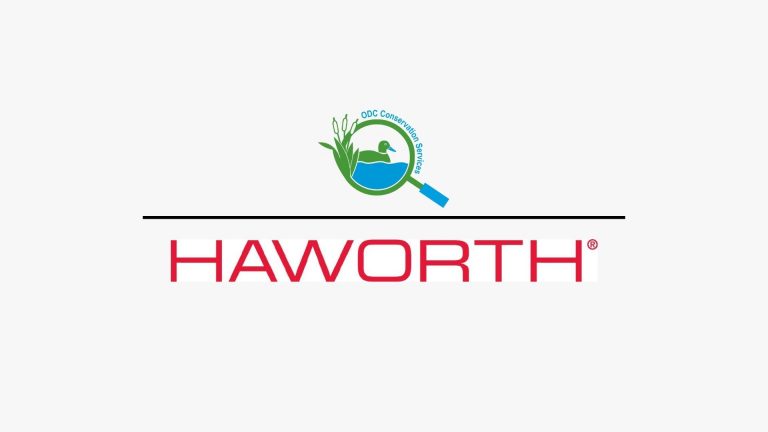ODC Conservation Services Partners with Haworth on Native Grasses Restoration Project

Leading up to the main entrance of Haworth’s headquarters in Holland, Michigan, billowing ornamental grasses, stretches of manicured lawn, and carefully tended flowerbeds create a visually pleasing and welcoming atmosphere.
Beyond the beautiful landscaping, the campus grounds are more prairie-like with a mix of wild grasses, field flowers, and other vegetation. These areas have purposely been left to thrive in their natural state as part of our commitment to our green building and sustainable site management objectives.
The environmental benefits of promoting the establishment of high-value, native prairie plant species include reducing lawn care maintenance, creating habitat for wildlife —including bees, butterflies, and other pollinators—and providing green space for people to enjoy. Prairies also absorb a lot of rain, reducing water runoff into our local streams, lakes, and other waterways, which can cause flooding and erosion.
Over time, however, several varieties of invasive plants—thistle, teasel, and autumn olive—have been spreading across Haworth’s natural land areas. The seeds may have been transported by birds, animals, or even humans, while some invasive species, such as thistle, also have aggressive root systems capable of spreading long distances from a single plant.
Invasive species can cause biological pollution by reducing plant diversity, impacting food sources and habitat for wildlife as well as the pollinators crucial for crop and other plant growth.
To manage the invasive plants, Haworth this year is coordinating with ODC Network’s Conservation Services team on a multi-phased project, which includes converting several areas of overgrown turfgrass and existing lawn into native prairie species.
The corporate groundskeeping crew has already completed first-phase activities, cutting back vegetation in the project areas and administering herbicide applications, being careful to disturb the soil as little as possible to reduce the development and spread of invasive plant seeds and root systems.
“The initial broadcast herbicide application in June went smoothly in the prairie restoration areas,” said Jeff Jennings, Facilities project manager. “We’ve also installed ‘Restoration in Progress’ signage on each of the prairie restoration units along M40 so, as the grass begins to recede, the public has insight as to what’s taking place on the property.”
The next phase entails another broadcast herbicide application in late August and a September seeding of rye and oats as a cover crop to help retain soil moisture, prevent erosion, and improve soil quality.
The final step in late fall will be dormant seeding of native prairie grasses and wildflowers. Dormant fall seeding enables seed stratification—a process necessary for seeds to break dormancy—over the winter months, resulting in higher levels of germination the following spring.
It will take approximately three years for the prairie growth to become fully established. The treated areas will be surveyed in early 2023 to evaluate the effectiveness of the control efforts to inform future management strategies.
“We’re pleased with the results so far and look forward to continued progress toward improving the biodiversity on our site,” said Jeff.
“Restoring and protecting our native ecosystems, as we are doing with our campus grassland areas, supports Haworth’s long tradition of sustainability and our values, which include making the world better,” said Tom Schmidt, Facilities Services manager. “Thank you to Dominic Daunter, our Global Design, Innovation and Sustainability director, and ODC for their collaborative efforts in overseeing this project to fruition.”
